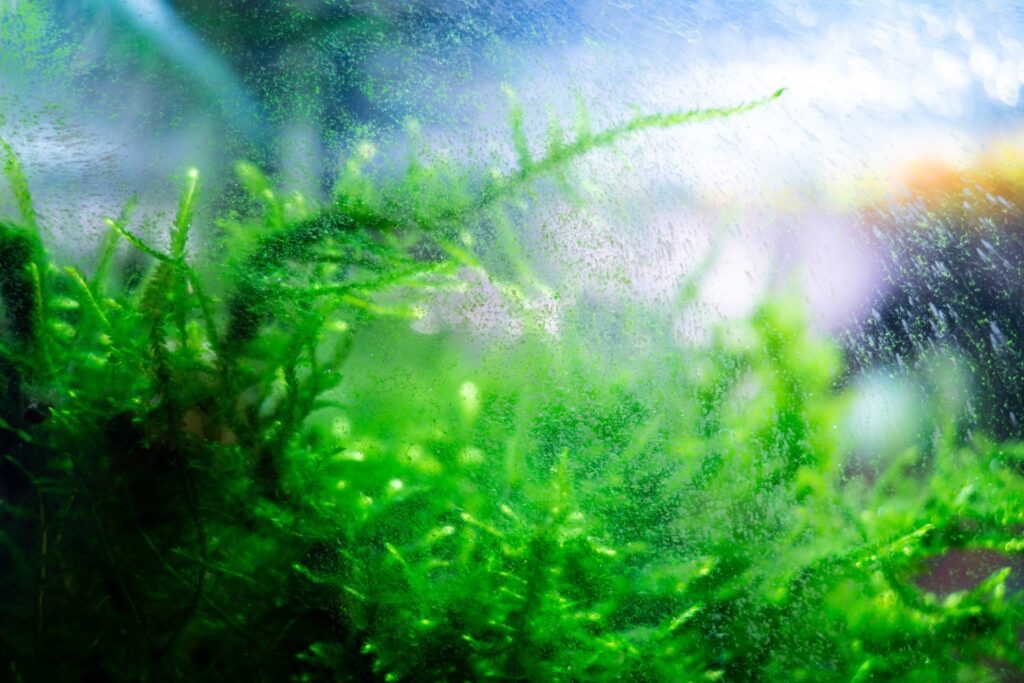Aquarium algae can be a nuisance for many aquarium hobbyists. While a little bit of algae can be beneficial for aquarium ecosystems, too much of it can cause problems such as reduced water quality, unsightly appearance, and even harm to aquatic life. Therefore, it is important for aquarium owners to be able to identify different types of algae and understand how to control their growth.
Here are some common types of aquarium algae and tips on how to identify them:
- Green algae (Chlorophyta) Green algae are the most common type of algae found in aquariums. They can be seen as green hair-like growths on aquarium plants, substrate, and decorations. In some cases, they can also form green patches on the glass. Green algae are caused by an imbalance of nutrients in the water, particularly excess amounts of nitrogen and phosphorus.
To identify green algae, look for green or yellow-green strands or patches. They can be easily wiped off the glass, but can quickly return if the nutrient imbalance is not addressed.
- Brown algae (Phaeophyta) Brown algae are often referred to as diatoms. They are common in newly established aquariums, but can also occur in established tanks. Brown algae are caused by a lack of light and high levels of silicates in the water.
To identify brown algae, look for brown or yellow-brown patches on the glass, substrate, and decorations. They have a powdery texture and can be easily wiped off.
- Blue-green algae (Cyanobacteria) Blue-green algae are often referred to as red slime algae. They are not true algae, but a type of bacteria that can quickly take over an aquarium. Blue-green algae are caused by poor water quality, low oxygen levels, and high levels of nutrients in the water.
To identify blue-green algae, look for blue-green or reddish-brown slimy patches on the glass, substrate, and decorations. They can have a foul odor and release toxins that can harm fish and other aquatic life.
- Red algae (Rhodophyta) Red algae are less common in aquariums, but can occur in marine tanks. They are caused by a lack of light and high levels of nitrates in the water.
To identify red algae, look for reddish-brown or purple patches on the glass, substrate, and decorations. They can have a slimy texture and can be difficult to remove.
Now that you know how to identify different types of algae, here are some tips on how to control their growth:
- Maintain proper water parameters: Regular water changes, proper filtration, and monitoring of nutrient levels can help prevent algae growth.
- Control light: Algae require light to grow, so controlling the amount and duration of light can help prevent their growth. Consider using a timer to ensure consistent lighting.
- Clean regularly: Regular cleaning of aquarium glass, substrate, and decorations can help prevent algae growth. Use a algae scraper or brush to remove any visible growths.
- Add algae-eating organisms: Certain species of fish, snails, and shrimp can help control algae growth. However, be sure to research the compatibility of these organisms with your existing aquatic life.
In conclusion, identifying and controlling aquarium algae is an important aspect of aquarium maintenance. By understanding the causes and characteristics of different types of algae, aquarium owners can take proactive steps to prevent their growth and ensure a healthy and thriving aquatic ecosystem.
![]()




